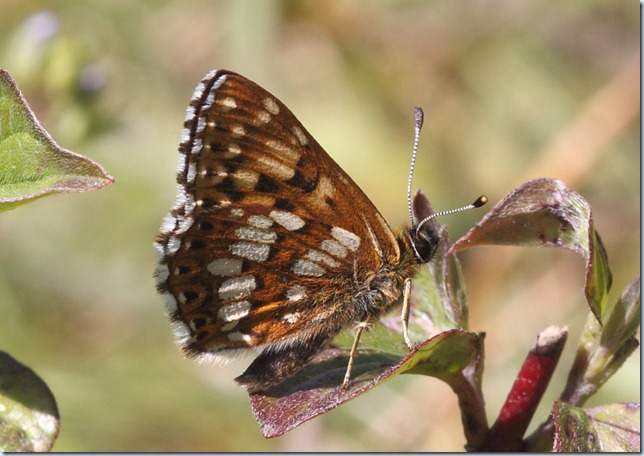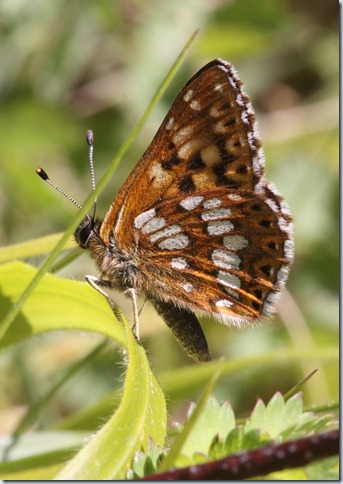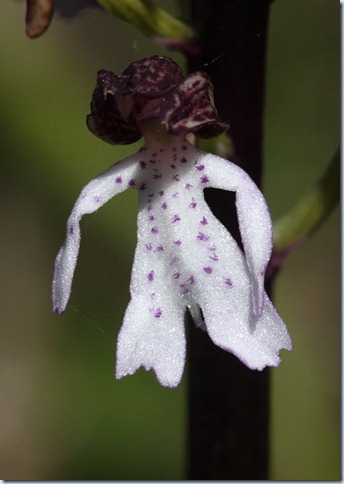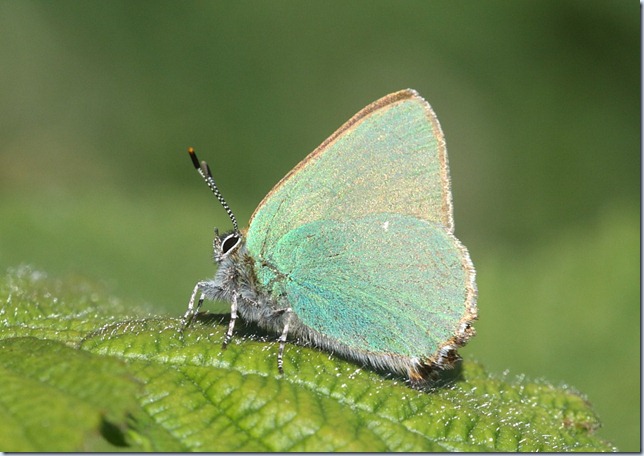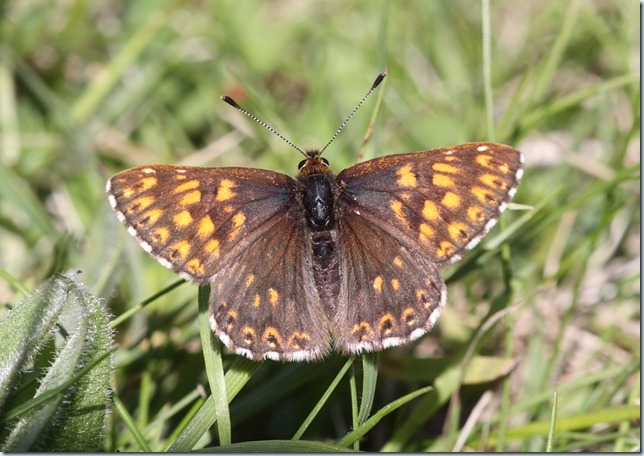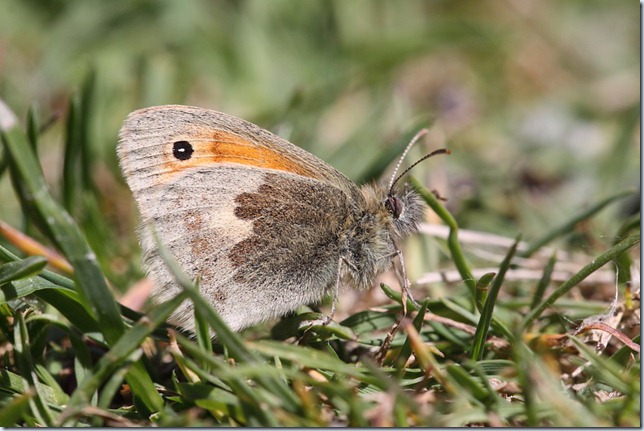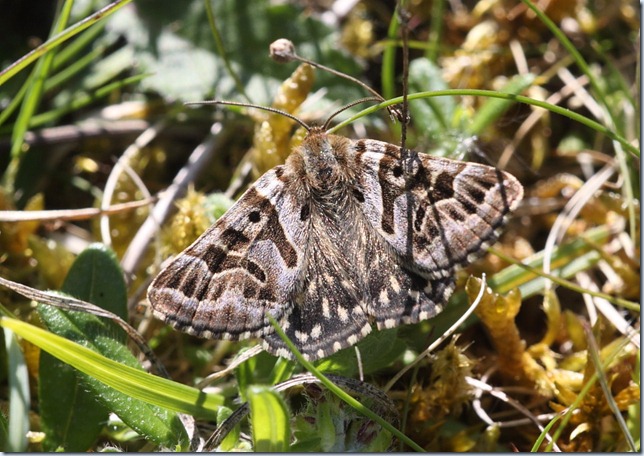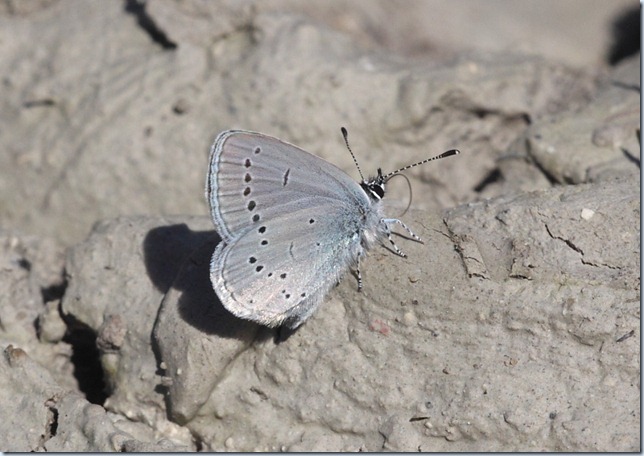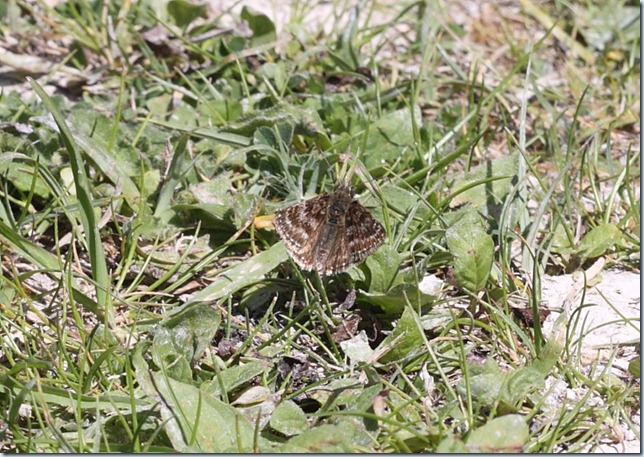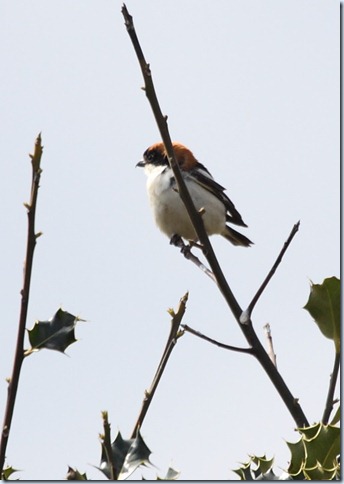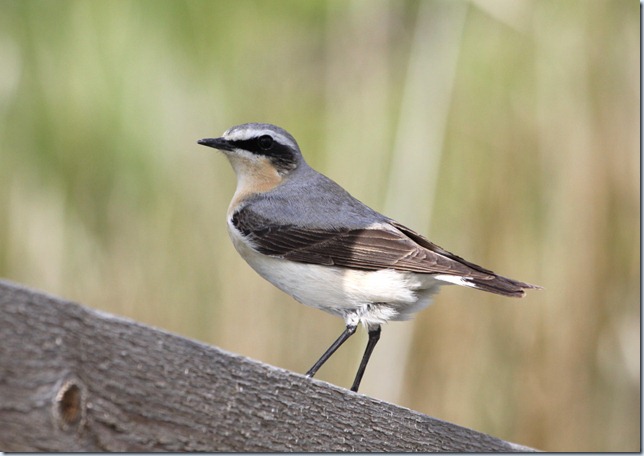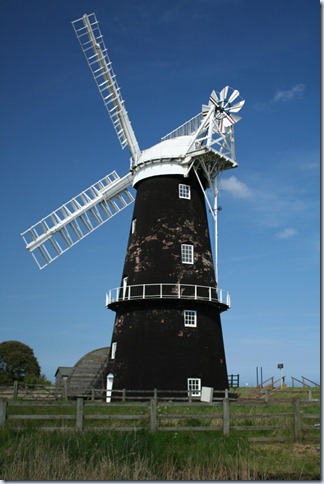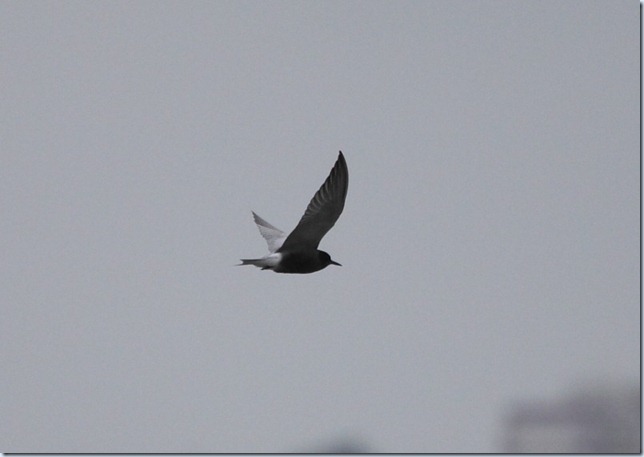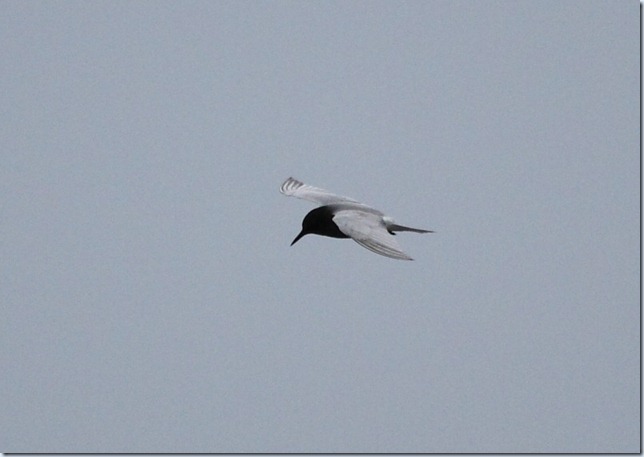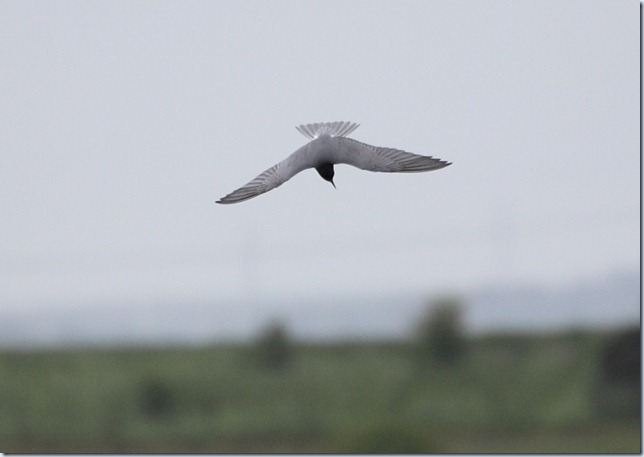Another cracking afternoon’s twitching today, this time in the very fine company of Mr ‘Monkey’ Blow. We left Hornchurch heading for Suffolk, where a Wryneck / Red-rumped Swallow / Temminck’s Stint combo was on the cards… but that plan was left hanging when the first two disappeared in short order. We considered our options briefly over another delicious pasty at Rainham, and decided that Kent was worth a visit, starting with the Hoopoe near Lenham Heath. This showed well immediately on arrival, before it too did a bunk. My digiscoped photos are astonishingly bad (obviously due to the windy conditions, not my skill level), beneath even the low standard I usually set on this blog!
Continuing on, we headed to Dungeness, where a pair of Purple Herons have taken up residence on Denge Marsh for the last few days. The weather was typical of Mayday Bank Holiday… i.e. freezing cold, with rain and occasional hail showers, and a biting northerly wind. Fortunately, the herons didn’t mind, and put on a great show. Here’s some rather distant pictures:

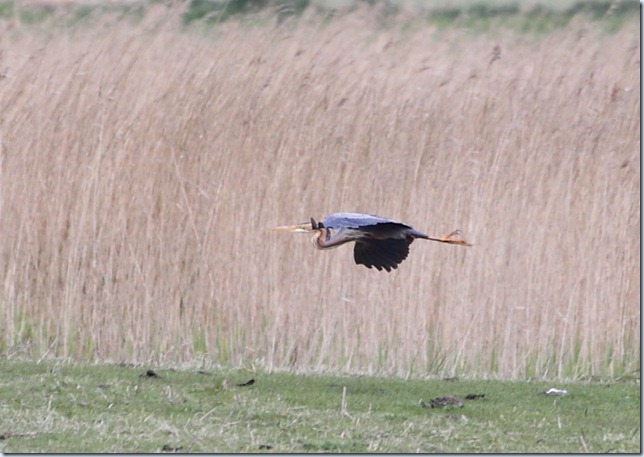 Also noted here was a smart male Marsh Harrier, another 10 Bar-tailed Godwits and a couple of Yellow Wagtails. Speaking to a couple of other birders, it sounded as though the sea was rather quiet (not surprising for this site in a NNE wind), so we opted to grab a warming coffee, and then head for home. Just before reaching the Dartford crossing and the predictable 10 minute delay, a message from Essex caught our attention: “Red-rumped Swallow Gunners Park at 4.50pm”. Check the clock: it’s 4.51pm, sky appears murky enough over the Essex coast to keep hirundines down low, so let’s go…
Also noted here was a smart male Marsh Harrier, another 10 Bar-tailed Godwits and a couple of Yellow Wagtails. Speaking to a couple of other birders, it sounded as though the sea was rather quiet (not surprising for this site in a NNE wind), so we opted to grab a warming coffee, and then head for home. Just before reaching the Dartford crossing and the predictable 10 minute delay, a message from Essex caught our attention: “Red-rumped Swallow Gunners Park at 4.50pm”. Check the clock: it’s 4.51pm, sky appears murky enough over the Essex coast to keep hirundines down low, so let’s go…
And boy am I glad we did! The swallow was still showing very well on arrival, hawking low over a small pool with about 20 House Martins, coming to within about 25m at times. It was tending to favour the opposite side from the small group of birders, though, so after a while a few of us moved round to this area. Now the views were truly stunning, several times down to 3m – too close for the camera, no need for binoculars, just watch and enjoy.
The following are heavy crops and certainly aren’t great shots, but given the difficulty of getting anything at all, I’m well enough pleased. The experience of this bird whizzing around our heads will live longer in the memory than the photos though – a superb end to the day!

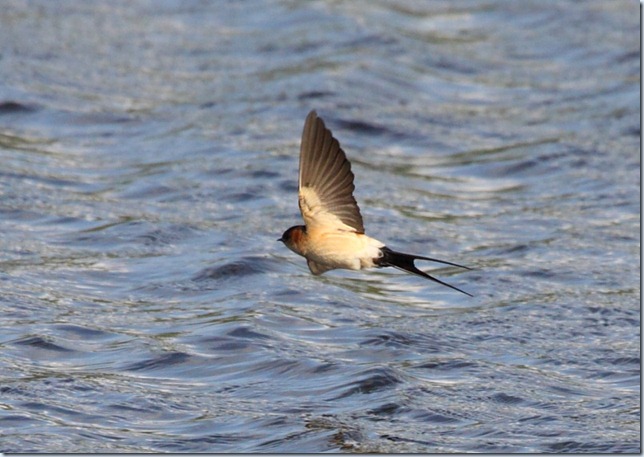
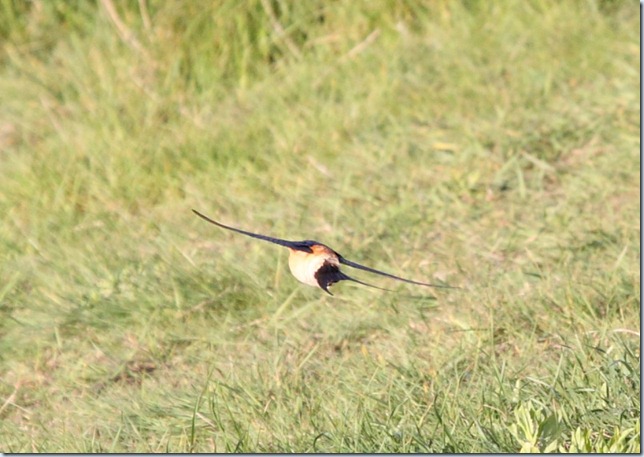
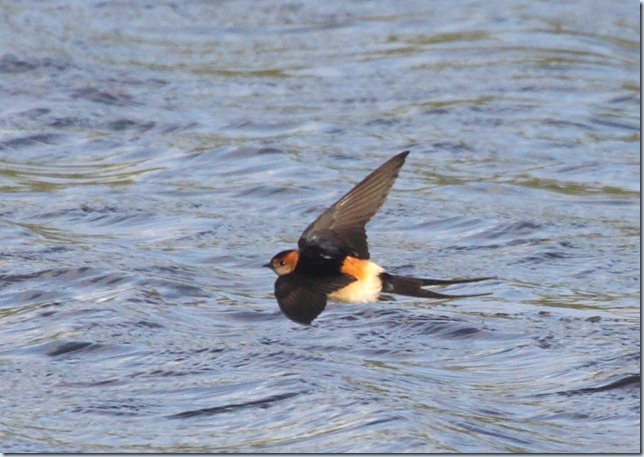
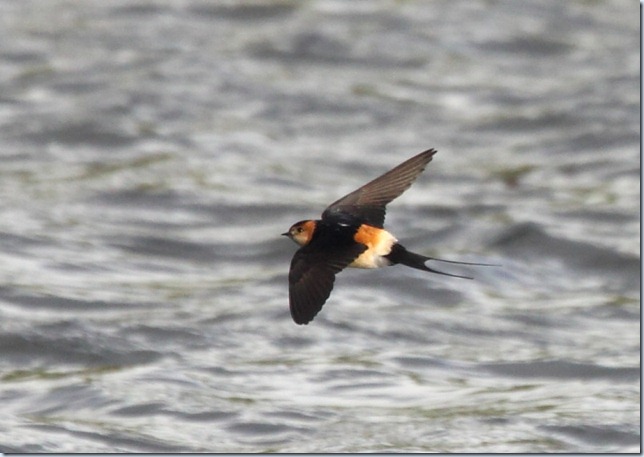
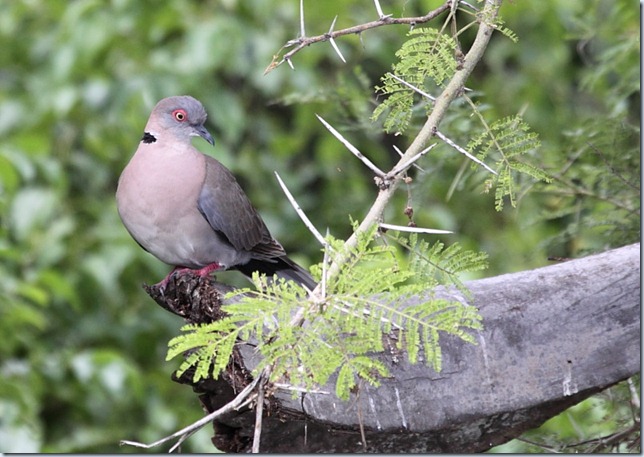 African Mourning Dove – note also the adjacent Acacia spines; having inadvertantly brushed past some of these while taking photos, I can tell you they’re razor sharp!
African Mourning Dove – note also the adjacent Acacia spines; having inadvertantly brushed past some of these while taking photos, I can tell you they’re razor sharp!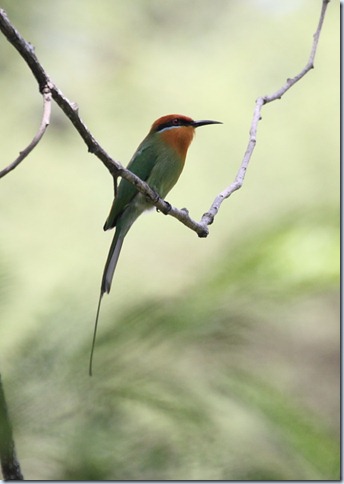 Boehm’s Bee-eater – a beautiful confiding species, often seen in the shade around Mvuu Camp during the hottest part of the day.
Boehm’s Bee-eater – a beautiful confiding species, often seen in the shade around Mvuu Camp during the hottest part of the day.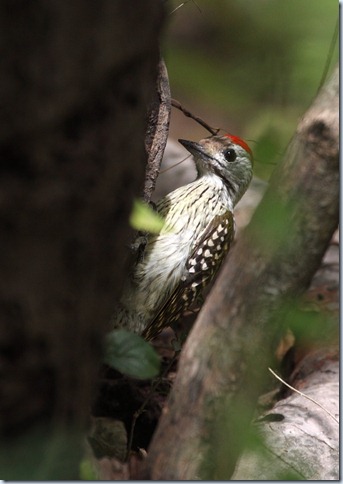 Cardinal Woodpecker – quite a common bird, but very smart nonetheless
Cardinal Woodpecker – quite a common bird, but very smart nonetheless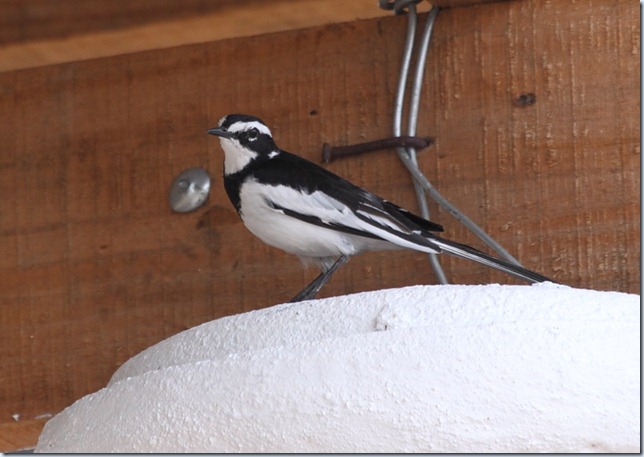 African Pied Wagtail – this one was perched on the lamp outside our hotel room by Lake Malawi!
African Pied Wagtail – this one was perched on the lamp outside our hotel room by Lake Malawi!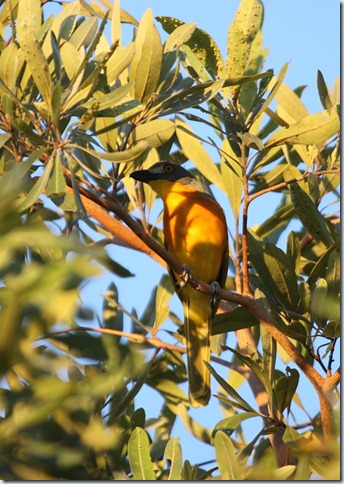 Grey-headed Bush Shrike – I spent a long time trying to track down this individual, as it called constantly from thick vegetation. Would’ve been a better shot if it had emerged from the shade, but this is still a decent record.
Grey-headed Bush Shrike – I spent a long time trying to track down this individual, as it called constantly from thick vegetation. Would’ve been a better shot if it had emerged from the shade, but this is still a decent record.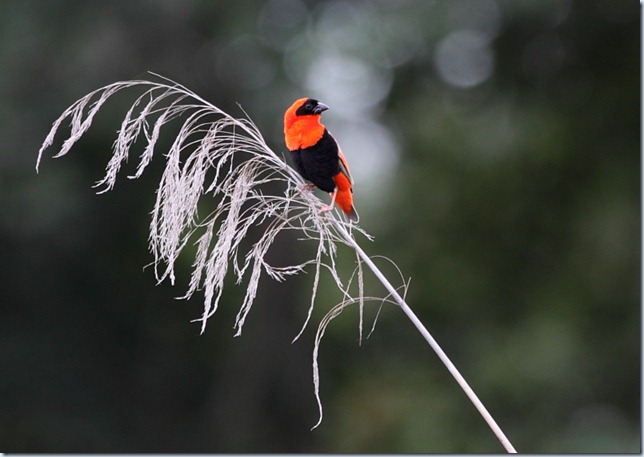 Red Bishop – our trip was timed to coincide with Bishops and Whydahs being in full breeding plumage – stunning!
Red Bishop – our trip was timed to coincide with Bishops and Whydahs being in full breeding plumage – stunning!
